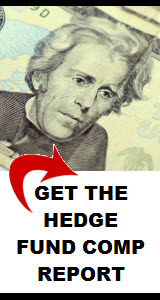Arbitrage is an exotic-sounding name for a group of strategies that try profit from price differences between securities or markets.
For example, suppose a hedge fund trader noticed that a stock is trading at $11.98 in New York and $11.99 in London. He would buy as many shares as possible in New York, using leverage (borrowing money) if necessary, to increase his holdings, and immediately sell those same shares in London, making a profit of one penny per share. This type of arbitrage trade theoretically has no risk since he has bought and sold the exact same number of the same shares.
However, given today’s advanced technology, it is both difficult and quite rate to find such inefficiencies in the market. Traders usually pounce on any inefficient pricing and the opportunity for profit quickly disappears, sometimes in just seconds. Thus, arbitrageurs typically have highly sophisticated computerized trading systems that monitor price fluctuations in real time around the world, and execute trades instantaneously.
In theory, arbitrage shouldn’t even exist. Economists argue that markets are supposed to be perfectly efficient, and that the market reflects all of the known information about a stock or a particular security in its price.
In fact, there’s an old joke about an economist and a hedge fund manager walking down the street together. They both spot a $100 bill lying on the sidewalk. The economist, who believes in the efficient market theory, does nothing. In his view, the $100 bill cannot possibly exist because if it did, someone would have picked it up already. The hedge fund manager, on the other hand, sees the $100 bill and grabs it.
To those who believe in the Efficient Market Hypothesis, it’s impossible to beat the market because stock prices always reflect current and relevant information. This means stocks always trade at fair value. It should be impossible to consistently outperform the market through manager skill, expert stock selection or market timing. The only way for an investor to earn higher returns would be to take on higher risk.
While the Efficient Market Hypothesis is a cornerstone of modern financial theory, there are many people who don’t buy into it. There are plenty of exceptions to the rule. For instance, investors such as Warren Buffet have consistently beaten the market over long periods of time, which should be impossible. Major events such as the 1987 stock market crash and the recent financial crisis have shown that stocks can deviate from their fair market values by a considerable amount, in a short period of time.
Ray Dalio, founder of Bridgewater Associates and manager of what is now the world’s biggest hedge fund, has averaged an annual return of 15% before fees in his flagship hedge fund, Pure Alpha, for more than 18 years. He has done this through the Asian crisis of the 1990s, the dotcom crash, and the terrorist attacks of September 11, 2001. Even last year, when the average hedge fund fell by 18%, his Pure Alpha fund generated a gross return of 14%. Again, theoretically impossible.
It’s certainly true that pure arbitrage – the “riskless” trade described at the very beginning that occurs when you buy an asset in one market and simultaneously sell in another—is a rare occurrence. A hedge fund couldn’t stay in business for long by relying on such rare events.
But hedge fund managers argue that arbitrage opportunities exist, and they happen all the time. Most arbitrageurs practice something called risk arbitrage. With risk arbitrage, a fund manager doesn’t necessarily buy and sell the same security, or buy and sell at the same time.
Rather than exploiting price differences between identical assets, a manager will purchase and sell securities, assets and derivatives with similar characteristics, and hedge away any significant differences between the two assets.
For example, a fund manager may uncover a substantial difference between U.S. dollar debt and local currency debt of a foreign country, and enter into a series of matching trades (including currency swaps) to arbitrage the difference, while simultaneously entering into credit default swaps to protect against country risk and other types of specific risk.
Next time we’ll look at how managers accomplish this, along with the various sub-strategies of arbitrage trading they use.






Comments on this entry are closed.